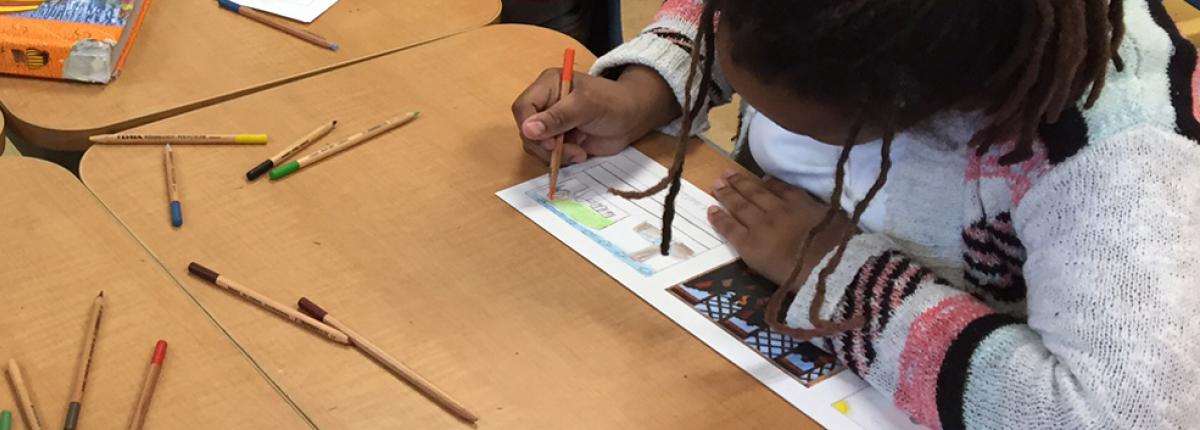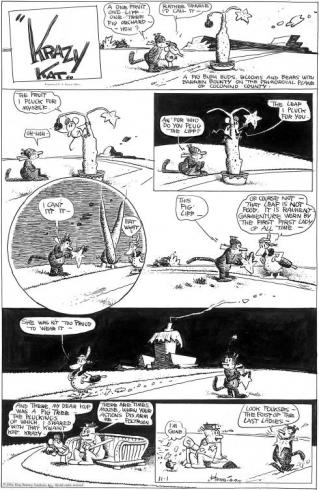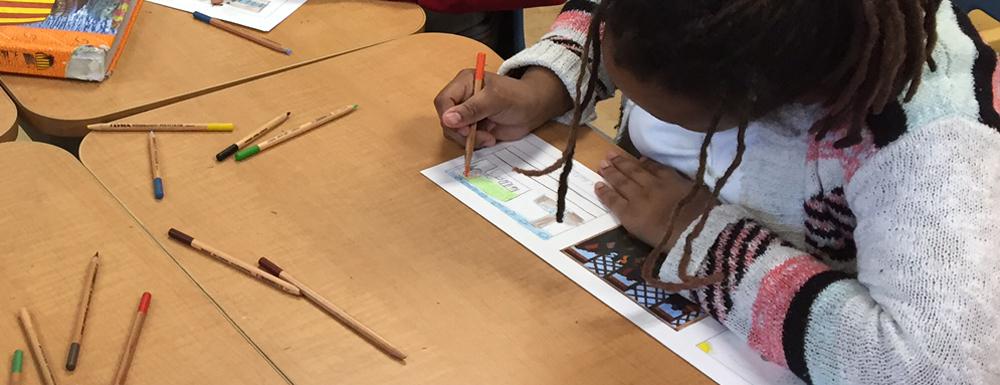Lawrence's Process: Storyboarding

Part 1: Lawrence’s Process
Introduce:
- Watch this video on Lawrence’s artistic process for The Migration Series.
- After watching the video, ask students to describe Lawrence’s artistic process.
- Explain that Lawrence drew inspiration from other media such as literature, art, comic strips, and storyboards.
Part 2: Storyboards and Comic Strips
Discover:
- Lawrence used visual devices found in movie storyboards such as close ups, pan outs, and silhouettes.
- A close up - zooming in on something
- A pan out - pulling back to show a bigger picture
- A silhouette - an image of people, objects, or animals represented by a solid shape in a single color, typically black
- In partners, have students look at the panels of The Migration Series. After showing them the following examples, ask them to IDENTIFY other panels that show:
- A close up - Panel no. 44
- A pan out - Panel no. 15
- A silhouette - Panel no. 3
- After identifying examples, have students pick panels on which to focus: two panels that show close ups, two panels that show pan outs, and two panels that show silhouettes (6 panels total). Then, have them answer the following questions:
- For grades 4-5:
- For the close ups: What is the panel focusing on? What does that tell you about why this image might be important?
- For the pan outs: What does the panel show by panning out? What does that tell you about why all of these objects might be important?
- For the silhouettes: What is in silhouette in the panel? What does that tell you about why that object(s) might be important?
- For grades 6-8:
- For the close ups: What effect does the close up have on the story being told? Why do you think he chose to create that panel as a close up?
- For the pan outs: What effect does the pan out have on the story being told? Why do you think he chose to create that panel as a pan out?
- For the silhouettes: What effect does the silhouette have on the story being told? Why do you think he chose to create that panel with a silhouette
- For grades 4-5:
Compare:
- In a Think-Pair-Share, have students look at this comic strip that inspired Jacob Lawrence: Krazy Kat by George Herriman. Ask students to compare the comic strip to the panels of The Migration Series
- What do you notice is similar between the comic strip and the panels?
- What do you notice is different between the comic strip and the panels?
- Additional questions for grades 6-8:
- Why do you think Lawrence might have been inspired by comic strips?
- How does this comic strip-style format help tell the story of the Great Migration?
- Why was this format effective in telling the story of the Great Migration?
- Have students share their responses to the class.
Part 3: Artmaking
- Now that students have looked at how techniques from comic strips and storyboards inspired Jacob Lawrence’s approach to The Migration Series, they will create their own series using a storyboard approach.
- They should use the following visual techniques in at least one panel each: close ups, pan outs, and silhouettes.
- Provide students with this planning tool for their storyboard to consider an event in their life.
- You can provide this storyboard template, or they can create their own template.
- Students should then create their series using selected art materials (construction paper, crayons, markers, paint, colored pencils, etc.).
Share:
- Students present their art pieces.
- As students show their pieces, the rest of the class should identify the visual techniques used by the artist.
Additional Context
Lesson Context
Jacob Lawrence used visual devices reminiscent of motion picture storyboards to zoom in for close-ups, to pan back for a broader perspective, or to silhouette a figure, all of which add drama and excitement. He drew inspiration from movie storyboards and comic strips, like the 1932 comic strip Krazy Kat, “A one-fruit, one-liff-one-tree- fig orchard, heh?” While Lawrence was inspired by comic strips, he ultimately wanted the series to function as a single, visually unified work of art.
Key Terms
The Great Migration: In the Southern US, African Americans endured blatant discrimination and segregation as part of Jim Crow laws, as well as poor economic conditions. In the hopes of improved living and working conditions, hundreds of thousands of African Americans migrated from the South to the North, in particular to Chicago, Los Angeles, Detroit, Philadelphia, and New York. The Great Migration happened in two major waves: the first one being from 1916-1940 and the second one from 1941-1970.
Storyboard: A type of graphic organizer made up of a series of illustrations or pictures. These illustrations are divided into panels and laid out in a particular order to tell a story.


